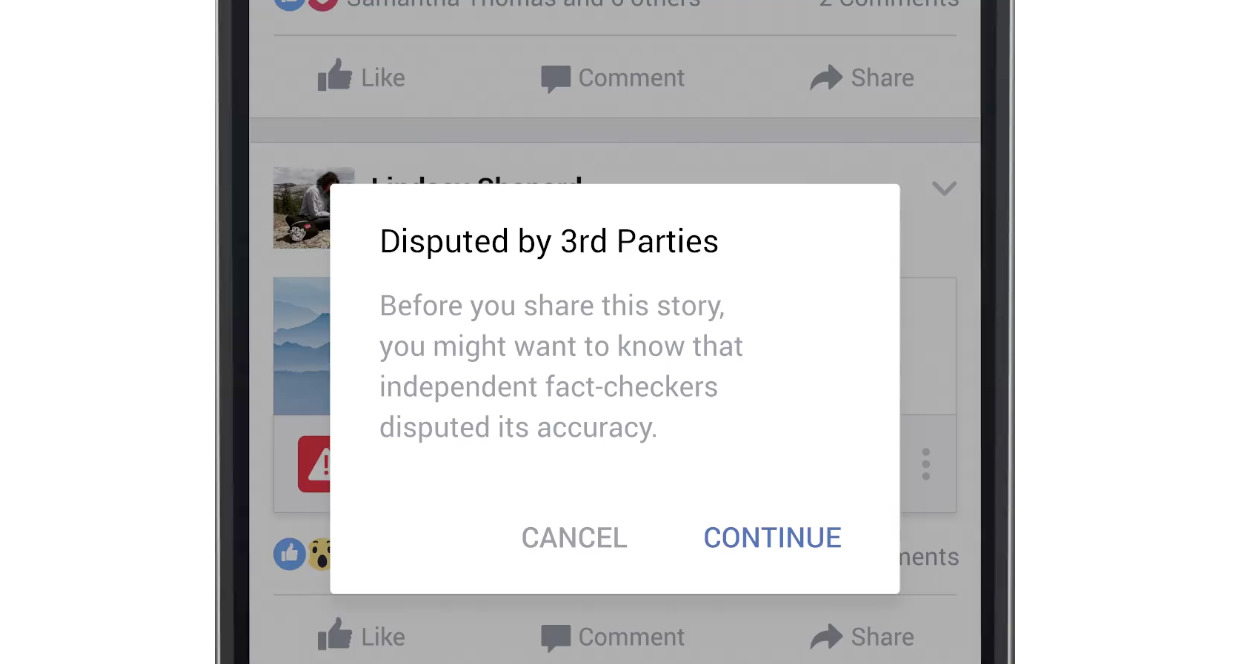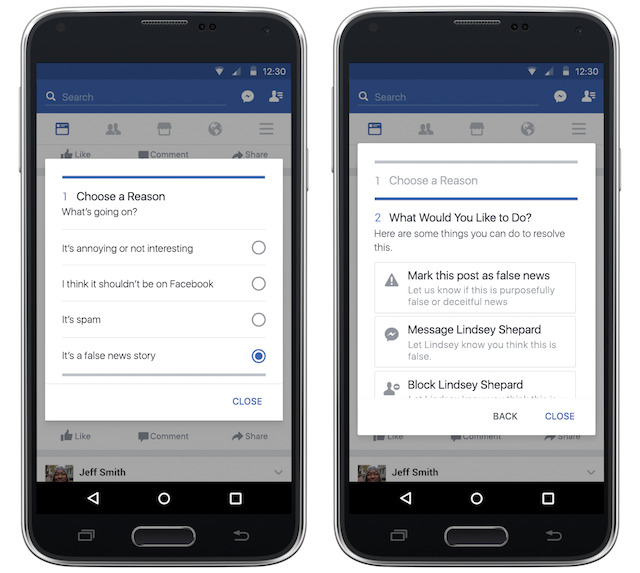Facebook steps up 'false news' crackdown with tips for spotting and reporting bogus stories
This week, users on Facebook began receiving a public service announcement from the social networking site regarding what it has branded as "false news," offering tips on how to spot a fake story.
Notably, Facebook has chosen to refer to the trend as "false news," rather than "fake news," in an attempt to avoid the rhetoric — Â and accompanying political minefield — Â that now surrounds the latter term.
In announcing its initiative, Facebook has dubbed it "a new educational tool against information." Adam Mosseri, vice president of News Feed at Facebook, said the company's goal is for people to see accurate, truthful information when using the service.
"False news and hoaxes are harmful to our community and make the world less informed," Mosseri wrote. "All of us have a responsibility to curb the spread of false news."
"All of us have a responsibility to curb the spread of false news."
As part of its efforts, Facebook has focused on disrupting economic incentives for "false news," building new products to stop the spread, and helping people make informed decisions.
To aid the last two goals, the company added a new page to its help section called "Tips to Spot False News," which includes a top 10 list of things users can look out for. The page also gives detailed instructions on how to report a bogus story shared in a Facebook News Feed.
The new series of tips are being promoted on the Facebook News Feed on both desktop and mobile in 14 countries.
Once a news story is reported as false, it may be reviewed by independent third-party fact checkers. If those fact checkers determine the story is false, the story will be marked as "disputed."
Disputed stories are accompanied by a warning presented to users before they can share it, intended to discourage them from posting it to their feed.
Facebook's efforts are done in partnership with The News Literacy Project, Arizona State University's Walter Cronkite School of Journalism and Mass Communication, and the News Literacy Lessons for Digital Citizens.
Whether branded as "fake" or "false," Apple has also signaled it is working to curb the spread of factually inaccurate news stories. The company's internet service chief Eddy Cue indicated in February that Apple is working on backend solutions to stop misleading and dangerous content via its own News app for iOS.
Since last year's U.S. presidential election, "fake news" has morphed from a disinformation campaign to a major journalist problems. Entire websites are now devoted to churning out bogus stories that reinforce previously-held beliefs on hot-button political issues such as immigration, crime and the economy.
Such stories can go viral, either being spread through Facebook or Twitter or sent directly via Apple's own iMessages. Sometimes these stories gain enough traction to make it into legitimate news cycles, duping mainstream journalists and major news outlets.
"We're very concerned about all of the news items and the clickbait from that standpoint, and that driving a lot of the news coverage," Cue said. "We're trying to do some things in Apple News, we're learning from that and we need to share that together as an industry and improve it."
 Neil Hughes
Neil Hughes












 Malcolm Owen
Malcolm Owen
 William Gallagher
William Gallagher
 Christine McKee
Christine McKee
 Michael Stroup
Michael Stroup
 William Gallagher and Mike Wuerthele
William Gallagher and Mike Wuerthele


 Chip Loder
Chip Loder






